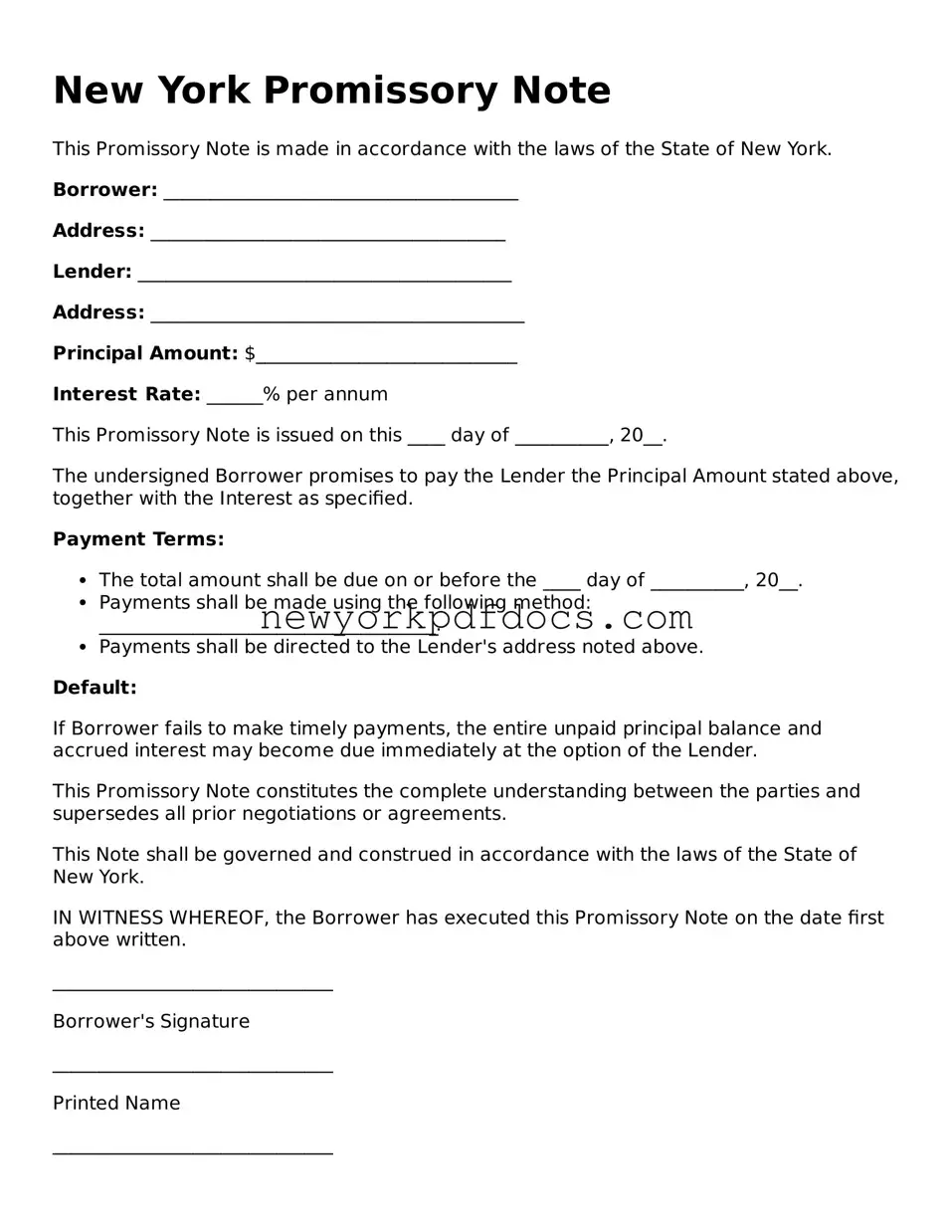New York Promissory Note
This Promissory Note is made in accordance with the laws of the State of New York.
Borrower: ______________________________________
Address: ______________________________________
Lender: ________________________________________
Address: ________________________________________
Principal Amount: $____________________________
Interest Rate: ______% per annum
This Promissory Note is issued on this ____ day of __________, 20__.
The undersigned Borrower promises to pay the Lender the Principal Amount stated above, together with the Interest as specified.
Payment Terms:
- The total amount shall be due on or before the ____ day of __________, 20__.
- Payments shall be made using the following method: ____________________________________.
- Payments shall be directed to the Lender's address noted above.
Default:
If Borrower fails to make timely payments, the entire unpaid principal balance and accrued interest may become due immediately at the option of the Lender.
This Promissory Note constitutes the complete understanding between the parties and supersedes all prior negotiations or agreements.
This Note shall be governed and construed in accordance with the laws of the State of New York.
IN WITNESS WHEREOF, the Borrower has executed this Promissory Note on the date first above written.
______________________________
Borrower's Signature
______________________________
Printed Name
______________________________
Lender's Signature
______________________________
Printed Name
